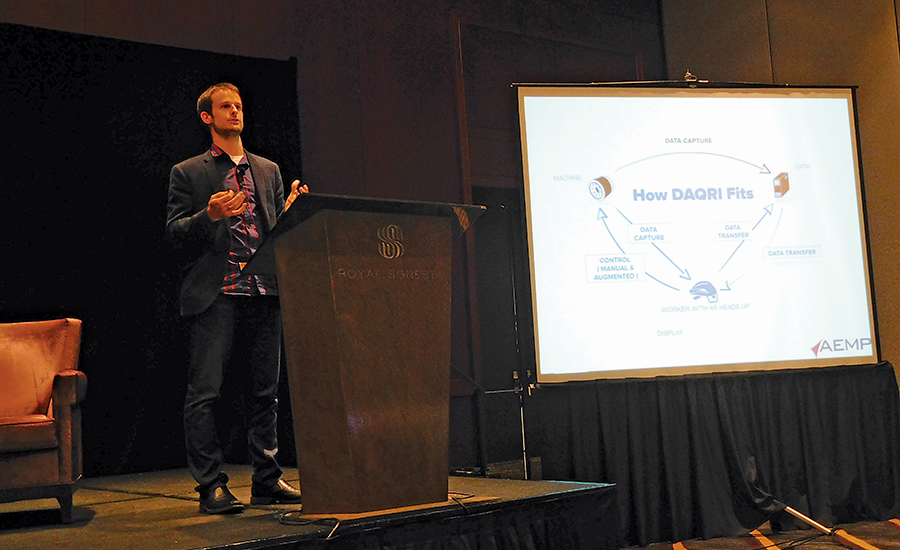HOUSTON—With more and more construction fleets implementing telematics, it is critical to ensure that the information acquired is useful and actionable.
Fleets are just starting to take advantage of big data. “We’re collecting all this data just because we can,” Tim Truex, equipment manager for Kokosing Construction Co., said at the Association of Equipment Management Professionals’ (AEMP) annual meeting, held in Houston on March 15-18.
“I think we have a fear of missing out, so we have to know what the cab temperature was and we have to know what the atmospheric pressure was—well, why?” he pointed out. “My suggestion is look at your business practices, what you’re trying to measure [and] what data your processes need, and go from there.”
His comments reflect a challenge in implementing telematics: information overload. “That’s how I feel some days, sitting at my computer and with all this stuff coming at you non-stop—where do you start?” Truex noted. “Don’t be paralyzed by the amount coming at you.”
Since the development of the AEMP telematics application-program interface standard, now in its second version, many are asking how to get a handle on it.
However, experts say the telematics work is just beginning. The AEMP standard itself “doesn’t do anything,” Truex noted. “It’s a server-to-server communication. It has nothing to do with your reporting from the machine to the server. Your [Caterpillar machine] is still talking to the Cat server, your Komatsu is still talking to the Komatsu server—all this does is normalize this data to be able to go into one repository.”
Kokosing, for example, has developed its own box and telematics system over the past six years, largely because no one company offered a system that addressed everything the firm was hoping to have in such a system, Truex says.
“We try to tie everything back to [the] operator, and impacts are just like safety or productivity,” he says.
In connection with Kokosing’s telematics system, one element the firm is using successfully is a card reader—that is, each operator is assigned a card that is used to operate a piece of equipment. This setup allows Kokosing to see exactly how each operator is using the equipment and where improvements may or may not be needed, Truex explained. The card also is linked to training, so an individual who hasn’t had the training necessary to operate a given tool will be unable to activate it. Plus, the card scanner provides an accountability platform, so that management can see exactly who was using a piece of equipment during or near an incident or mishap.
Meanwhile, the use of telematics and augmented or virtual reality systems could be a way for both manufacturers and fleets to save time and money in the maintenance and repair of machinery by optimizing and enhancing the abilities of field service technicians.
“Augmented reality has been around in academic labs for 20 to 30 years, but what we tend to see is this confluence of a bunch of complementary technologies—physical and human networks, proliferation of high-power computing devices, connectivity,” said Matt Kammerait, vice president of innovation at DAQRI. “Because of the real-time nature of these networks—how quickly everything is updated now, having everything up to the second—[and] control and awareness really [set] the scene for the emergence of augmented reality.”
Construction is moving quickly into gaming (ENR 3/7 p. 28). Virtual reality, or digital immersion, provides a tremendous training environment, while augmented reality, or a visual overlay of digital information over a real-world site, allows technicians to see virtual data that enhances an existing piece of equipment, Kammerait explained.
When a maintenance worker is wearing a headset that overlays 3D instructions on the equipment in the field or shop, “we start merging augmented reality with telematics,” explained Francois Melchner, project manager and new-technology consultant at Caterpillar Inc. “So, through the telematics, it recognizes straightaway which machine it is, and it gives a serial number automatically. Thanks to advanced analysis, then we will be able to highlight failures before they happen in a more efficient way than with traditional telematics.”



Post a comment to this article
Report Abusive Comment